Our Verdict
The ASRock A520M ITX/ac is a strong budget ITX offering. It offers a smart feature set and then there's the genuine bonus of Ryzen 5000 series support.
For
- Good value for money
- WiFi included
- Ryzen 5000 support
Against
- Weak audio
PC Gamer's got your back
The ITX form factor has a dedicated following, and the ASRock A520M ITC/ac definitely seems to thinks so. With the ever increasing integration of functionality into the chipset, there really isn’t a need for multiple PCIe slots like there has been in years past. Does a typical gamer need more than one slot for a graphics card? If the board has WiFi, LAN, USB 3.0 and decent audio, most of the core bases are covered.
AMD's budget Ryzen motherboard chipset, the A520, has largely slipped under the radar. While B350 and B450 motherboards were mostly regarded as being entry level, A320 was strictly seen as resolutely low end.
The introduction of B550 motherboards, and their associated move upward in price, left a big hole in the sub-$100 market. Enter A520. If you’re on a tighter budget, and don’t care about PCIe 4.0 or the overclocking support offered by B550, then the A520 motherboards might be exactly what you need. There’s cheap and there’s really cheap, but a decent A520 board can more or less do everything a board at double the price can.
You could grab an Nvidia RTX 3080, a top spec NVMe SSD , and 32GB of DDR4-3600, and use them all with an A520 motherboard. That would be an unlikely combo, but would remain a high performing one nonetheless.
And compare A520 to Intel’s B460 motherboards for a minute. You can run memory speeds at well above B460’s DDR4-2666 or 2933 hard limit, and you’re less likely to run into VRM heating issues thanks to the more power thrifty nature of Ryzen CPUs.
Then there’s the cherry on top which is support for the upcoming AMD Ryzen 5000 series and, almost as importantly, Ryzen 4000 series APUs. Combine a Zen 3 CPU with a motherboard such as this ASRock A520M ITX/ac and you’ll be able to build an affordable and compact system that—if AMD is to be believed—may beat any Intel in any kind of workload.

Socket - AM4
Chipset - A520
CPU Support - 3rd Gen Ryzen (not 3200G or 3400G)
Memory - 4x DDR4 slots up to DDR4-4733(OC)
Storage - 1x M.2; 4x SATA
USB - Up to 6x USB 3.2 Gen1, 4x USB 2.0
Networking - 802.11ac 433Mbps WiFi; Realtek RTL8111H LAN
Display outputs - 1x HDMI 2.1, 1x DVI-D
Audio - Realtek ALC887 7.1 Channel HD Audio
Form Factor - Mini-ITX
The ASRock A520M ITX/ac is one of the most expensive A520 boards at $105. In fact in many markets it might be the most expensive. That would be a little unusual for ASRock which is normally known for its highly competitive bang for buck offerings. It’s one of few A520 boards to include WiFi though, so that alone adds a great deal of usefulness. It supports a speed of 433 Mbps, not exactly the Usain Bolt of WiFi speeds when Wifi 6 is the norm, but it’s enough for high speed internet.
The A520M ITX/ac includes an 8-phase DRMOS VRM with 60a chokes. Spec wise this is surprisingly good for an A520 board. The only real concern is the very small heatsink. We wouldn’t try overclocking a Ryzen 9 3950X with liquid nitrogen on this board, but a smart pairing of a 65W CPU with a bit of PBO for good measure won’t present any issue, as long as you have good case airflow.
Being an ITX board, there are only two RAM slots, but with support for up to 64GB, this isn’t a problem. Would even a single user ever pair more than 64GB with a $100 board anyway? The supported speeds are what matters. There are none of the silly arbitrary 2,666MHz B460 memory limitations here. You can run up to DDR4-4600 if you really want, though you’re better off sticking to 3600MHz with current Ryzen 3000 CPUs. Though that is rumoured to be changing with the Zen 3 CPUs loving DDR4-4000 by all accounts.
The M.2 heatsink is solid and sturdy and it’s well placed to benefit from air passing over it towards a rear case fan. There are four SATA ports, standard fare on any ITX board where space is at a premium. Also noteworthy is the inclusion of RGB and ARGB headers. Fool your friends into thinking your $105 board is worth a lot more!
The rear I/O is fairly standard, with six USB ports consisting of two 2.0 ports and four 3.1 Gen 1 ports. We’d like to see eight on all but the very cheapest boards but the little ASRock is hardly alone there. We are pleased to see both HDMI 2.1 and Display Port 1.4 meaning that proper 4K/60Hz with a Renoir APU will be doable.
There’s also Realtek RTL8111H LAN and ALC887 audio. The ALC887 chip is over 10 years old now and is a bit lacking compared to the ALC 1200 found on the Gigabyte A520 Aorus Elite. If proper HiFi is high on your list of priorities, you can do better.
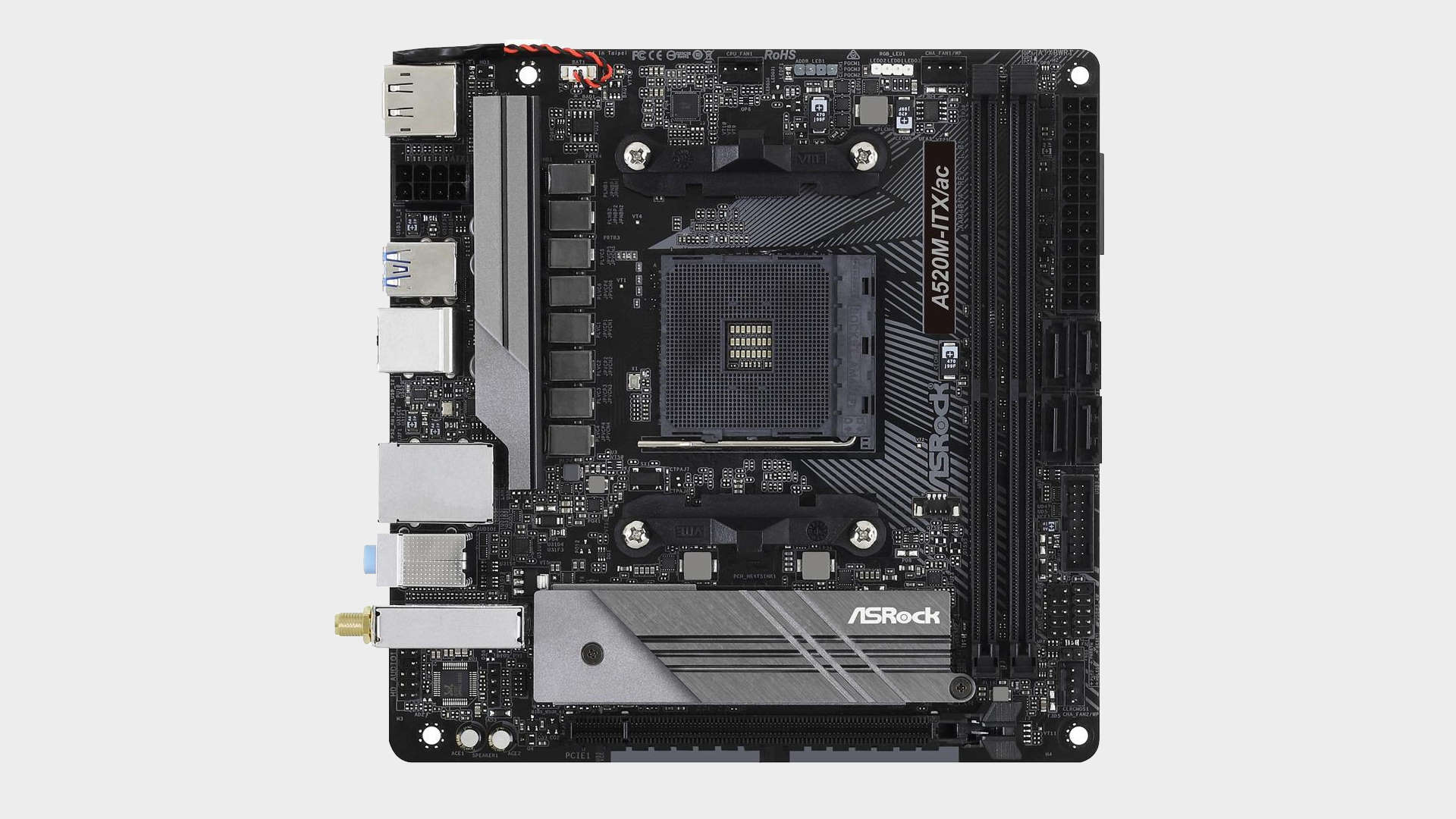
System performance
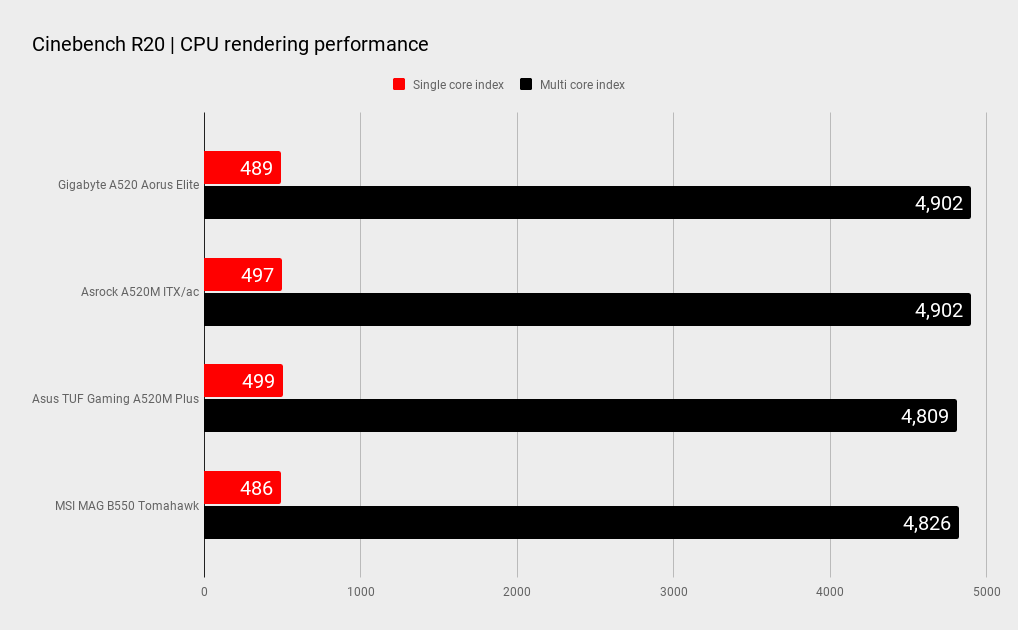
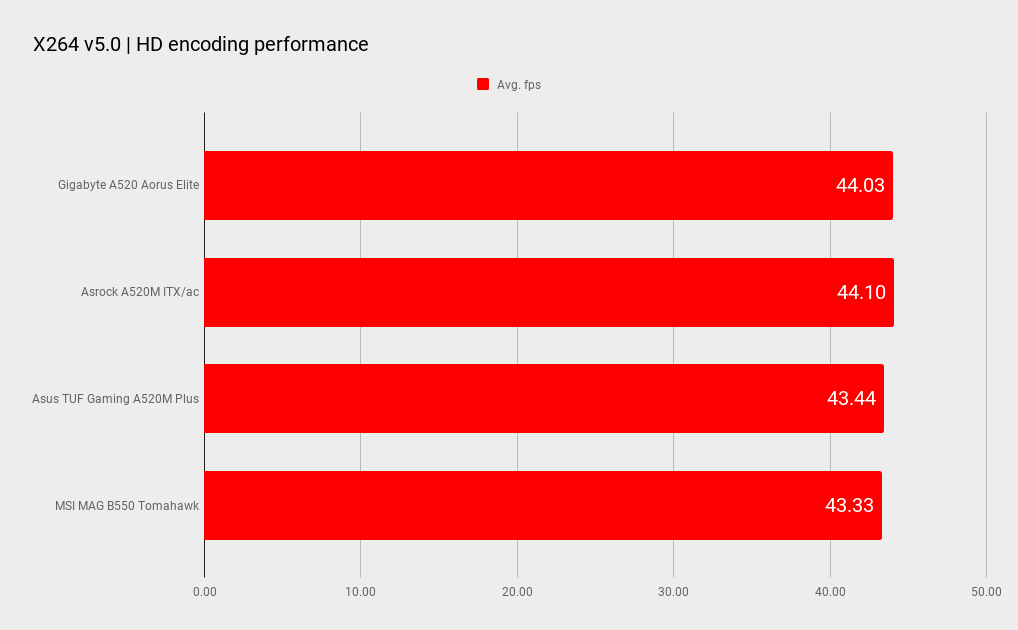

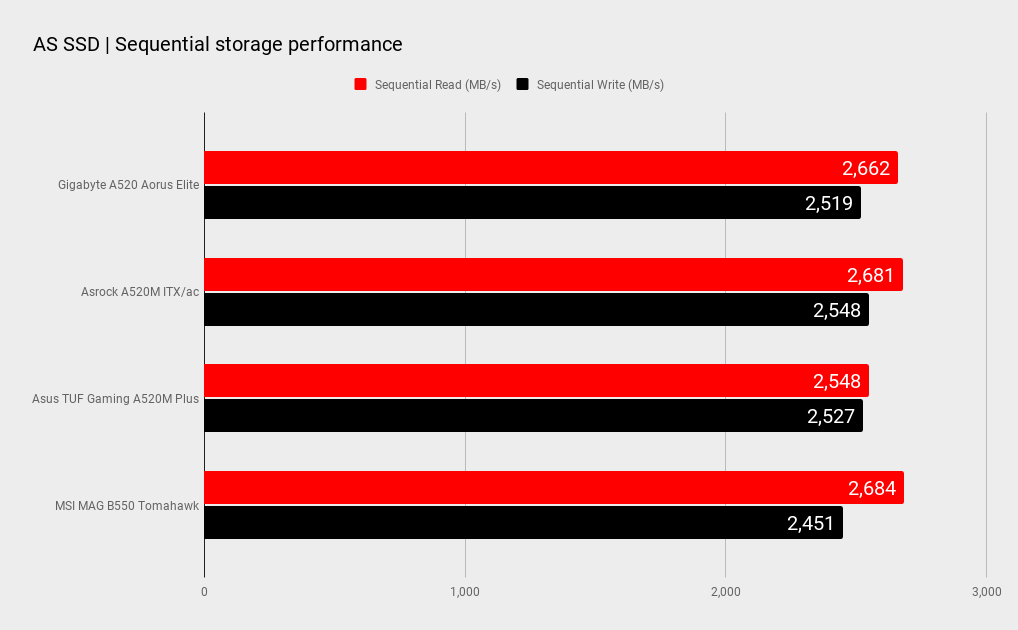
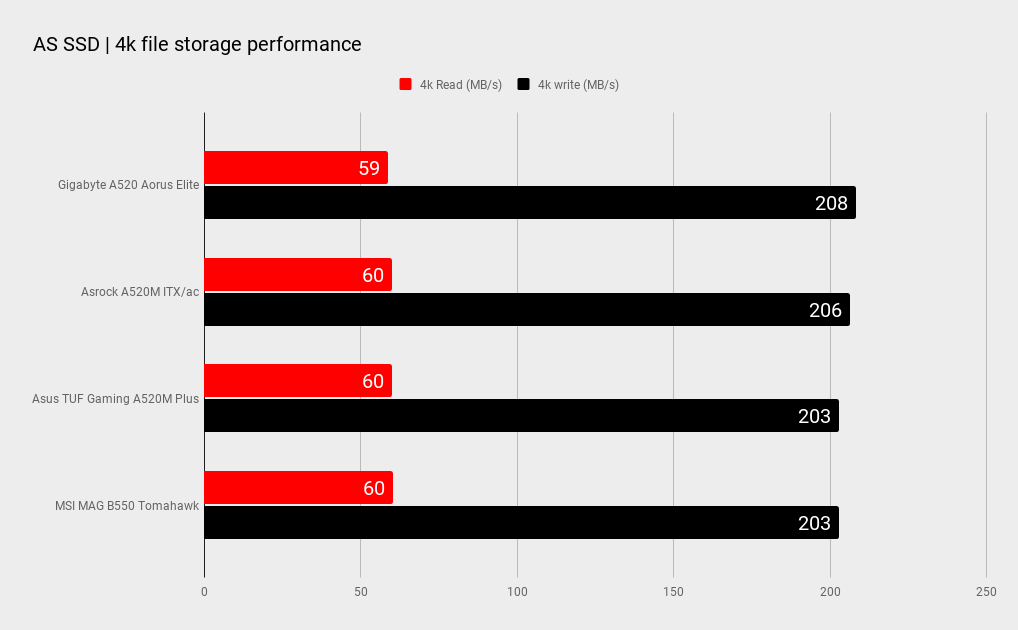
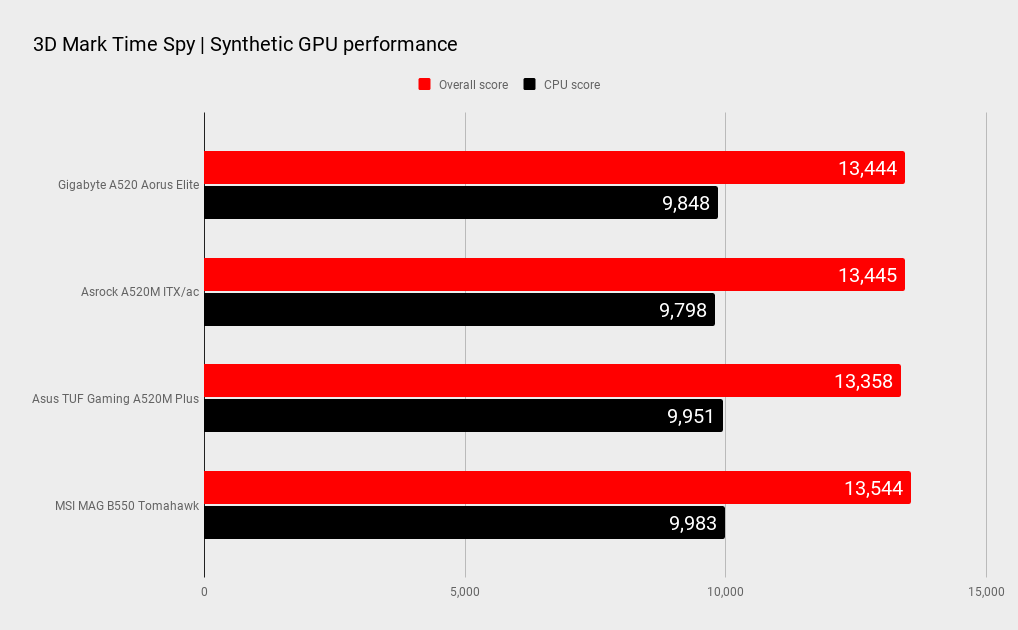
Gaming performance
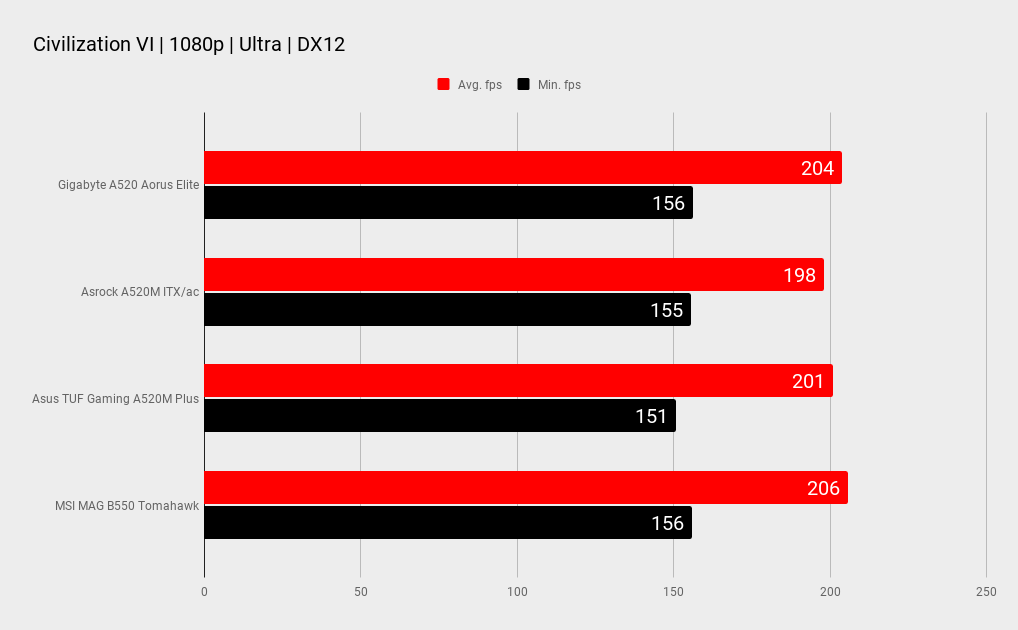
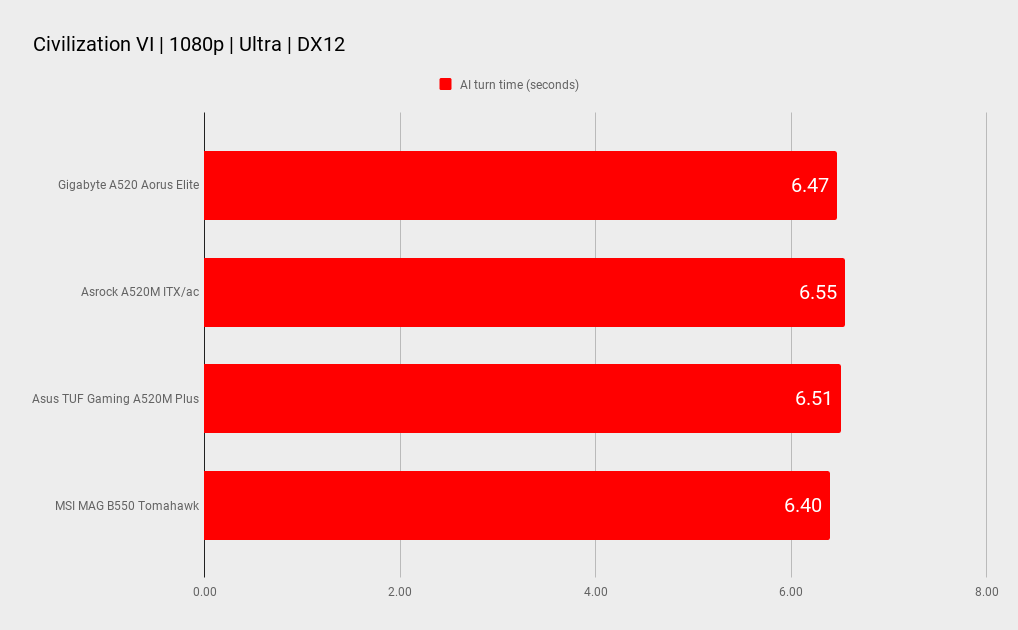
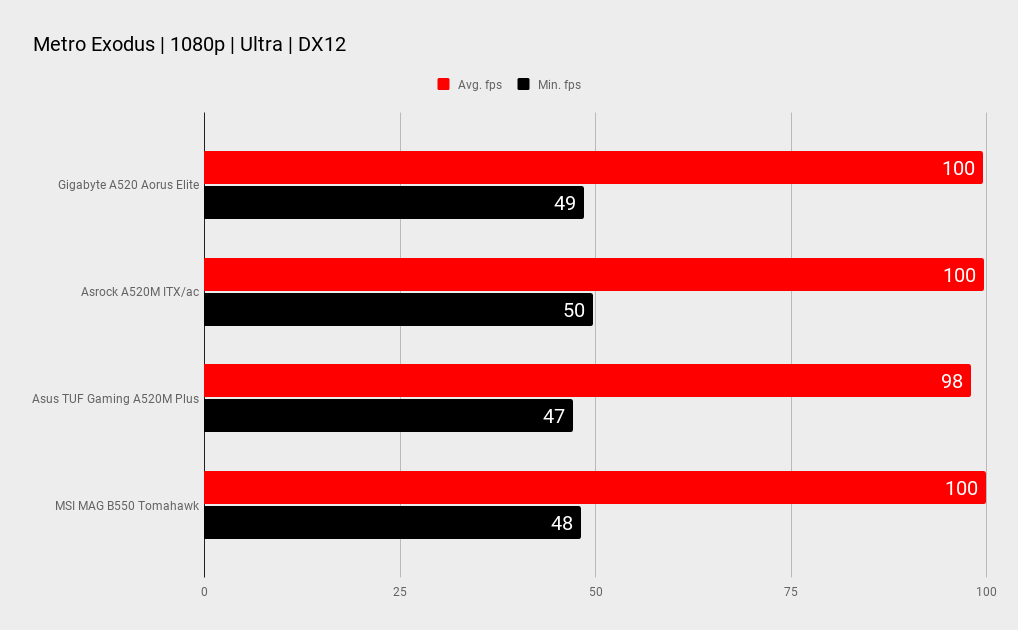
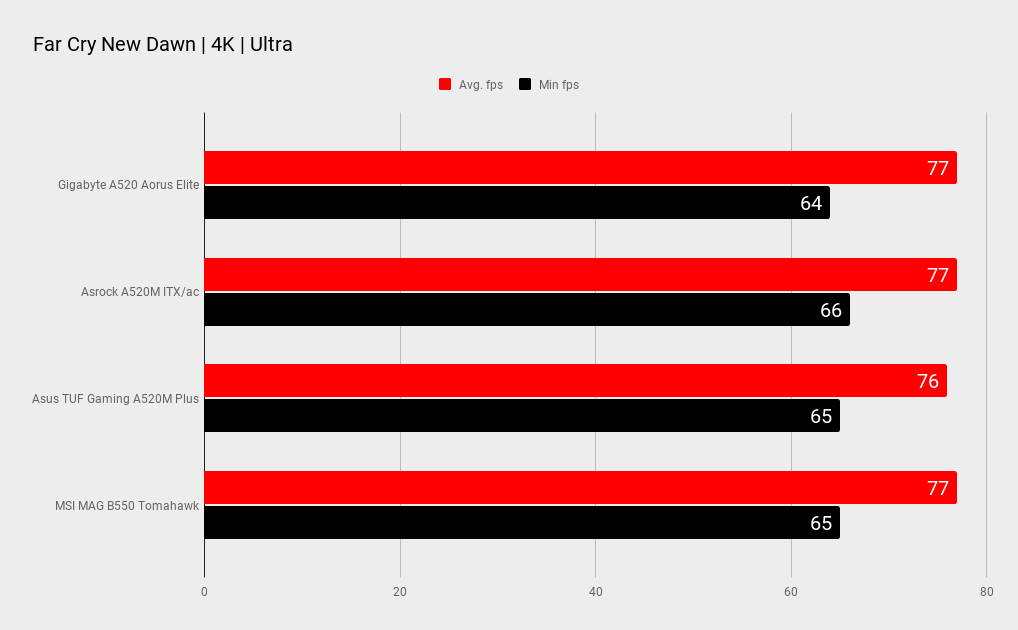
CPU - AMD Ryzen 7 3700X
Graphics - Nvidia GeForce RTX 2080 TI Founders Edition Memory - G.Skill Flare 2x8GB DDR4-3200 C14
Power Supply - Antec HCP-1200W
Storage - 1TB Samsung 970 EVO & 1TB 970 Pro M.2 SSD
Cooling - NZXT Kraken X73 360mm AIO
Operating system - Windows 10 Pro 64-bit
As we often say, the performance of modern motherboards usually falls within a standard margin of error. If we see an outlier, it can often be attributed an aggressive multi core turbo mode or even ambient temperatures affecting GPU boost clocks. The ASRock performed as expected. We did note that its storage performance with a Samsung 970 Pro was strong.
The gaming differences were minimal as expected. There’s nothing really stopping you from pairing the A520 ITX with a high quality GPU, no matter if you’re looking to push a high refresh rate monitor or game with all the eye candy at 4K.
The inclusion of WiFi alone makes this little ASRock one of the few compelling genuinely affordable ITX options. If you paired it with something like a Ryzen 3300X then you could divert some of your budget towards a better graphics card or bigger SSD. It’s also great to have upcoming Ryzen 5000 series CPU compatibility. If we are to believe AMD, a 65W 5600X sounds like a pretty sweet upgrade!
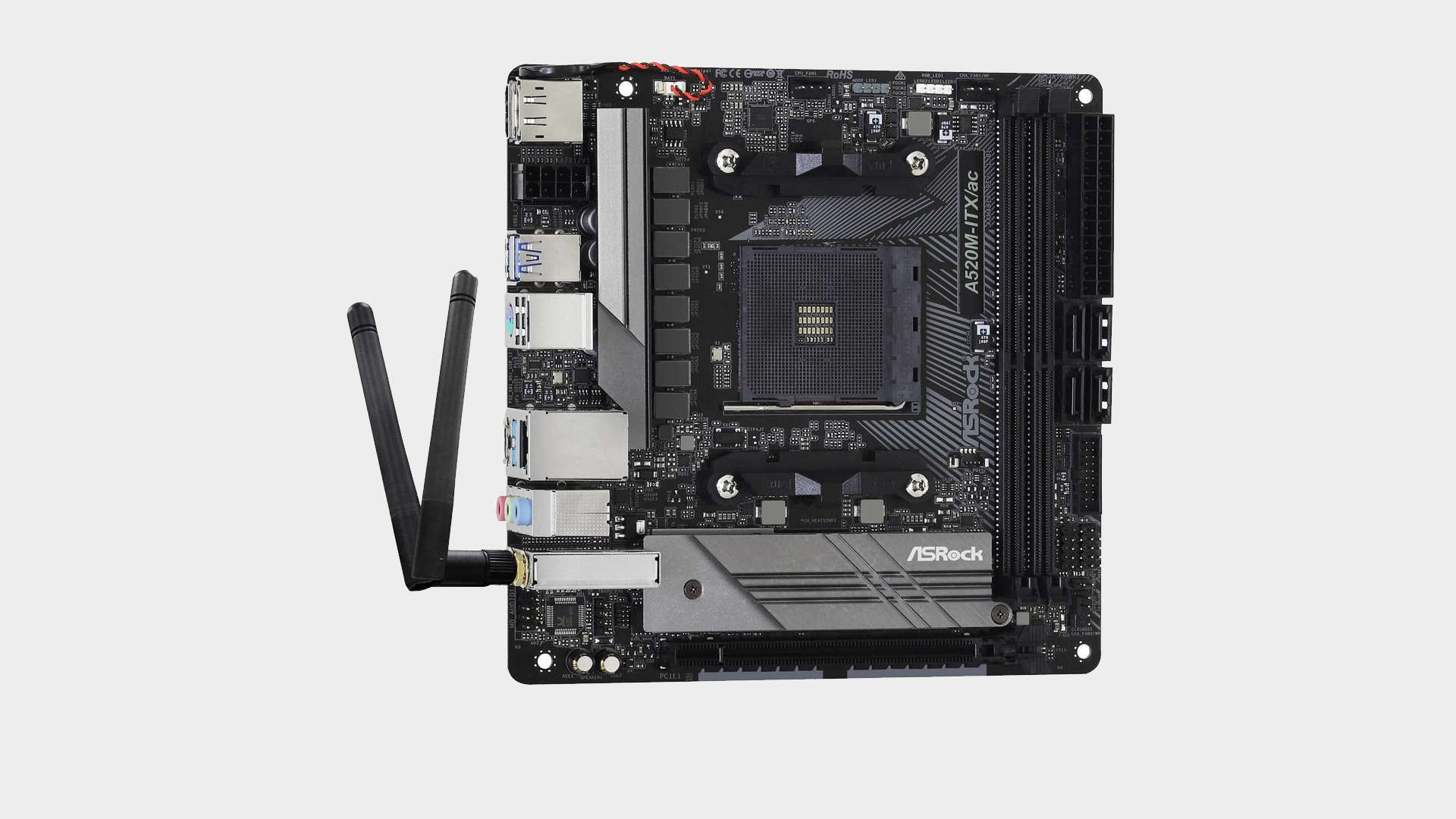
Just make sure you update your BIOS before popping one in.
It won’t blow up if you install a 105W CPU, and it will do almost everything a board at twice the price will do, that is if you don’t care about 7,000MB/s PCIe 4.0 SSD transfers.
The ASRock A520M's audio is a bit of a letdown but that’s something that budget boards often compromise on. A gamer listening to compressed audio assets in-game probably won’t be any less immersed.
The little ASRock A520M ITX/ac has it where it counts and will serve you well at the heart of a budget gaming system. It benefits from the strengths of the Ryzen platform and adds some future proofing into the mix. ITX fans looking for a capable budget AMD Ryzen option should definitely have this one on their shortlist.
The ASRock A520M ITX/ac is a strong budget ITX offering. It offers a smart feature set and then there's the genuine bonus of Ryzen 5000 series support.

Chris' gaming experiences go back to the mid-nineties when he conned his parents into buying an 'educational PC' that was conveniently overpowered to play Doom and Tie Fighter. He developed a love of extreme overclocking that destroyed his savings despite the cheaper hardware on offer via his job at a PC store. To afford more LN2 he began moonlighting as a reviewer for VR-Zone before jumping the fence to work for MSI Australia. Since then, he's gone back to journalism, enthusiastically reviewing the latest and greatest components for PC & Tech Authority, PC Powerplay and currently Australian Personal Computer magazine and PC Gamer. Chris still puts far too many hours into Borderlands 3, always striving to become a more efficient killer.


